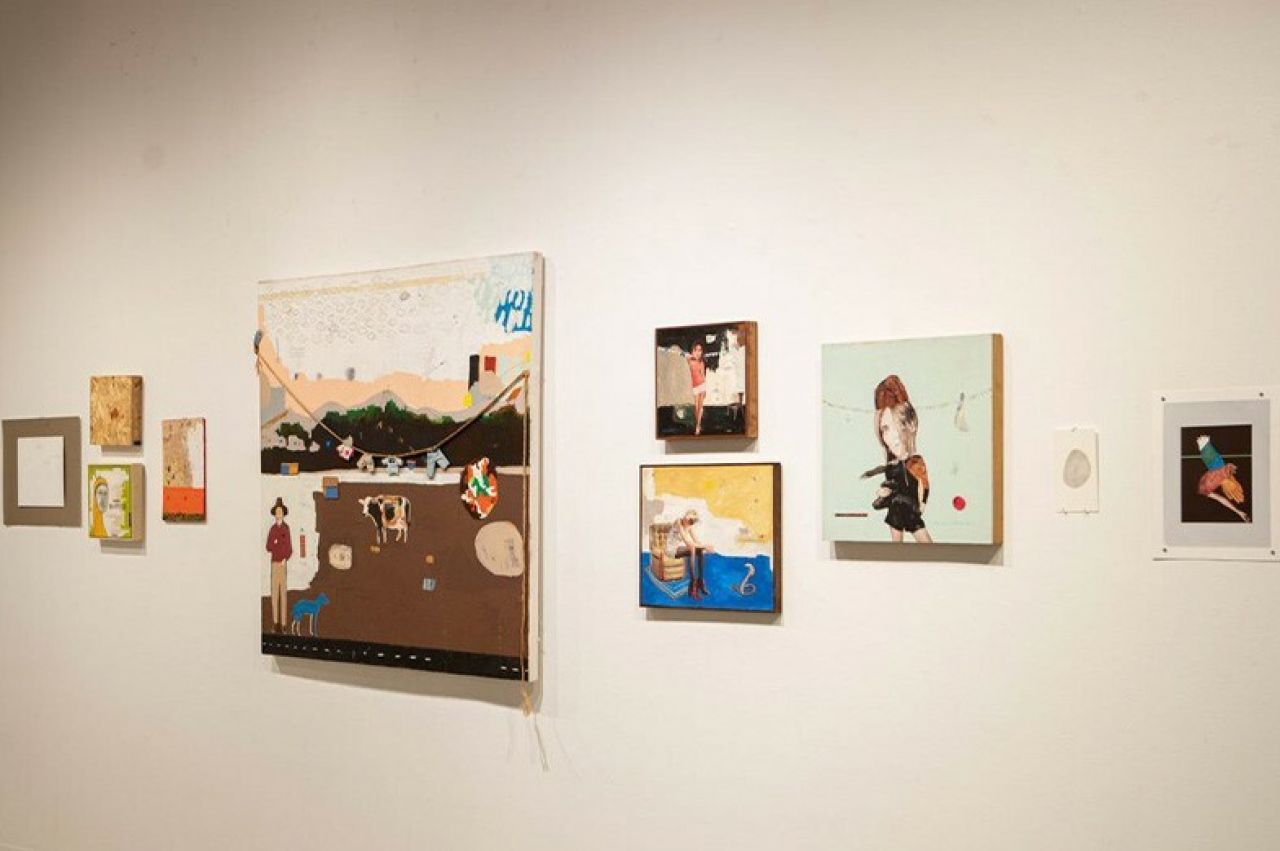April 11, 2022
Work of late School of Visual Arts alumnus carries on through his brother

After David Cuatlacuatl, artist and Penn State School of Visual Arts M.F.A. alumnus, died in 2017, his brother Federico Cuatlacuatl, also an artist, knew his work was too important to go unrecognized.
David Cuatlacuatl’s mixed-media artwork explores the hardships of Mexican immigrants through various themes and dialogues, and is currently featured in a traveling exhibition, “Pata Rajada,” which recently made a stop at Penn State.
“The work carries quite heavy investigation of indigeneity, immigration issues and diasporic experience of migrants in the United States,” Federico Cuatlacuatl said, noting “pata rajada” translates to “scarred feet.”
David and Federico both attended college as undocumented immigrants and were able to pursue higher education through DACA (Deferred Action for Childhood Arrivals). David really developed as an artist at Penn State, Cuatlacuatl said, and his ideas and investigative work solidified during his time in the graduate program.
“For my brother and I, it has been really important that we embrace our collective experiences, and by embracing that you build agency and empowerment—then you can be proud of that,” Cuatlacuatl said. “My brother was carving out that history, these 500 years of marginalization and oppression in Mexico and how that forced the community to self-displace, to migrate.”
When the brothers immigrated to the United States in 1999, they did not speak any English. Instead, David and Federico used a visual language—their art—to communicate the emotions and experiences of being displaced children.
“Our job as artists is to constantly be pushing and challenging, so it becomes sort of ‘artivism,’” Cuatlacuatl said. “The work is constantly a gesture of resistance, a gesture of activism, a gesture of defiance. That’s kind of the role of an artist always.”
David’s “artivism” lives on through Rasquache, an artist residency in Puebla, Mexico, that he established with Federico in 2016.
“He was making something almost every day,” Cuatlacuatl said. “In a way he was kind of compulsive, which makes me think that he had so much to say and so much to express and manifest. Fortunately, as an artist he was able to do that expressively through creative outputs. He wanted people to really be aware of what he was trying to say.”
Written by: Mackenzie Daly
Photos by: Anthony Jefferson


